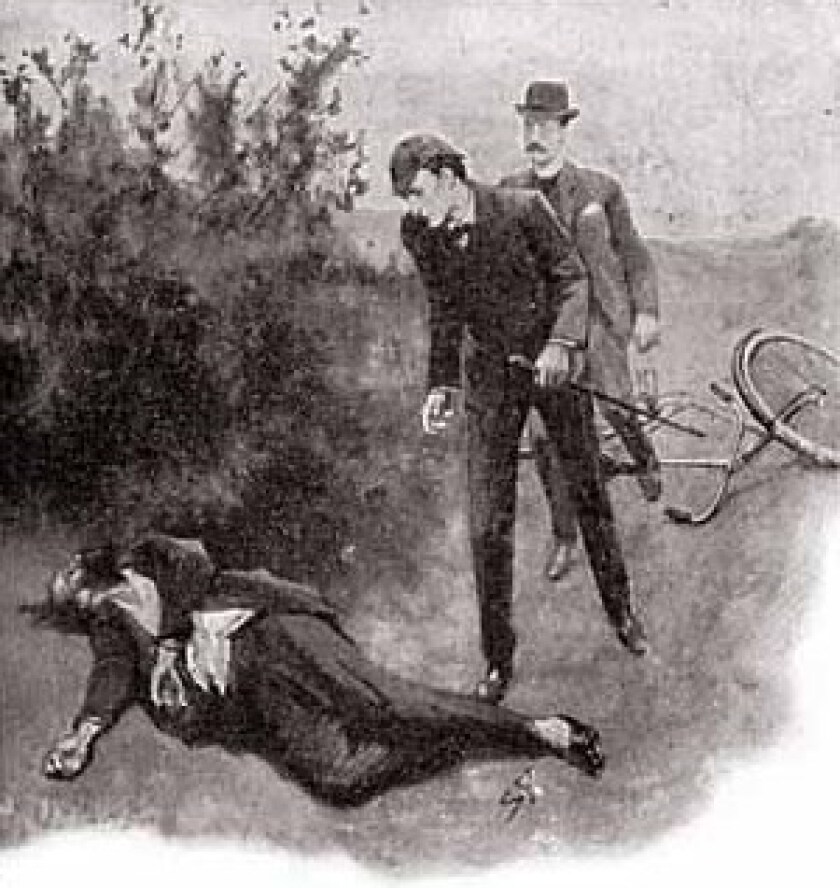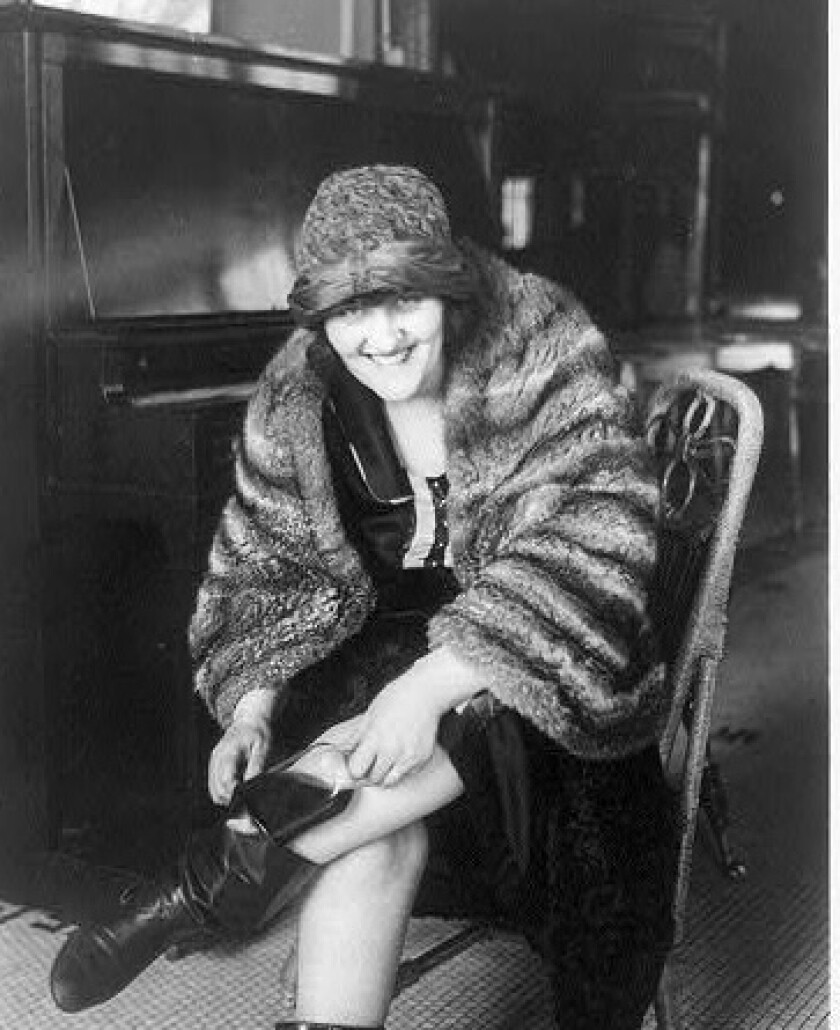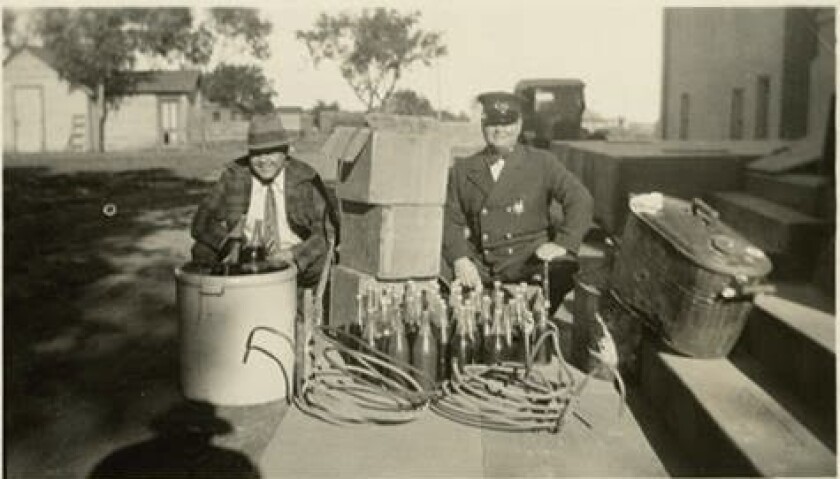FARGO — Close your eyes. You can almost picture the conversation on any given day of the Prohibition era.
“Hey, Johnny, I need you to run this hooch to the next town. Make it quick and don’t get caught.”
“Sure, Clyde, let me put on my cow shoes.”
Huh?
Cow shoes?
ADVERTISEMENT
Maybe you know them better as “heifer heels?”
No?
You were clearly not a bootlegger in 1920s rural America.

Cow shoes, or heifer heels, were made from blocks of wood carved to look like cow hooves. Bootleggers, moonshiners, and anyone else looking to avoid getting caught while transporting or manufacturing booze would strap them to the bottom of their shoes to throw off police, deputies and federal agents.
If law enforcement authorities were looking for suspicious activity, a series of human footprints could be a red flag for possible illegal activity there.
But they'd probably think nothing of seeing a few animal tracks, like those left by a cow walking by (or a human wearing these shoes).
“Nothing to see here, let’s move along.”

The shoes were particularly popular in rural areas where liquor needed to be transported through fields, woods, and grass rather than over the concrete of the urban jungle.
ADVERTISEMENT
These particular shoes, seized by prohibition agents in Florida, were shown off to newspapers of the time.
The headline in the May 27, 1922 issue of The Evening Standard in St. Petersburg read:
“Shiners wear cow shoes!”
The story went on to say that as clever as these shoes were, they were not invented by the bootleggers.
A common rumor is that bootleggers got the idea from a popular Sherlock Holmes story called "The Adventure of the Priory School."
In the story, a murderer evades police by putting fake cow hooves onto horses so they wouldn't know he was riding a horse.

Other sneaky tricks
While rum runners, moonshiners and anyone wanting to imbibe during prohibition might not have come up with the idea of cow shoes on their own, they certainly were a creative lot in how they hid their illegal booze.
ADVERTISEMENT

In rural parts of America, including the Dakotas and Minnesota, liquor was hidden inside animal carcasses like pigs or game birds hanging in the barn.
Newspaper reports in North Dakota detail the arrest of farm families who hide bottles in the bushes surrounding their homes or under the floorboards of sheds or outhouses.
In 1923, a Stanton, North Dakota, man was arrested for filling 10-gallon canisters in the barn with mash and moonshine instead of cream.
You have to wonder if his wife got the shock of her life while making her morning coffee.

On Christmas Day 1922, a man from Warwick, North Dakota, named Carl Bengston was arrested for tucking a bottle of booze in the branches of the community Christmas tree.
But he wasn’t hiding it there for himself. In the spirit of the season, he was giving it away.
According to the newspaper, he put a gift tag on it addressed with the name of “a lady of Warwick who had been active in assisting in the enforcement of the Prohibition law.”
When someone delivered the gift to her home, she was not amused.
ADVERTISEMENT

Other rural folks around the country found new ways to avoid detection via car by turning rhododendron roots into fuel. It’s hard to say just how bad it was for the car engine, but on the bright side, the exhaust was nearly smokeless.
Those who wanted to take their booze with them found ingenious ways to store it on their person or in everyday objects like cans, crutches, or books. (They were the precursors to modern-day gadgets that help you sneak spirits into concerts and football games.)
Even nice Minnesota girls did it
While those in the temperance movement viewed alcohol as a destructive force in homes, marriages and workplaces, it’s pretty clear consuming alcohol wasn’t dampening the creative powers of those hoping to get away with something.
By 1933, Prohibition was over.
Those who liked to drink no longer needed to be sneaky to do it.
Cream could go back in the canisters, plant roots could be taken out of the gas tank and no one ever needed to walk like a cow again.
STEP BACK IN TIME WITH TRACY BRIGGS

Hi, I'm Tracy Briggs. Thanks for reading my column! I love going "Back Then" every week with stories about interesting people, places and things from our past. Check out a few below. If you have an idea for a story, email me at tracy.briggs@forumcomm.com.

















